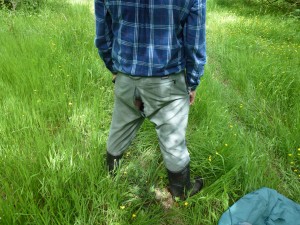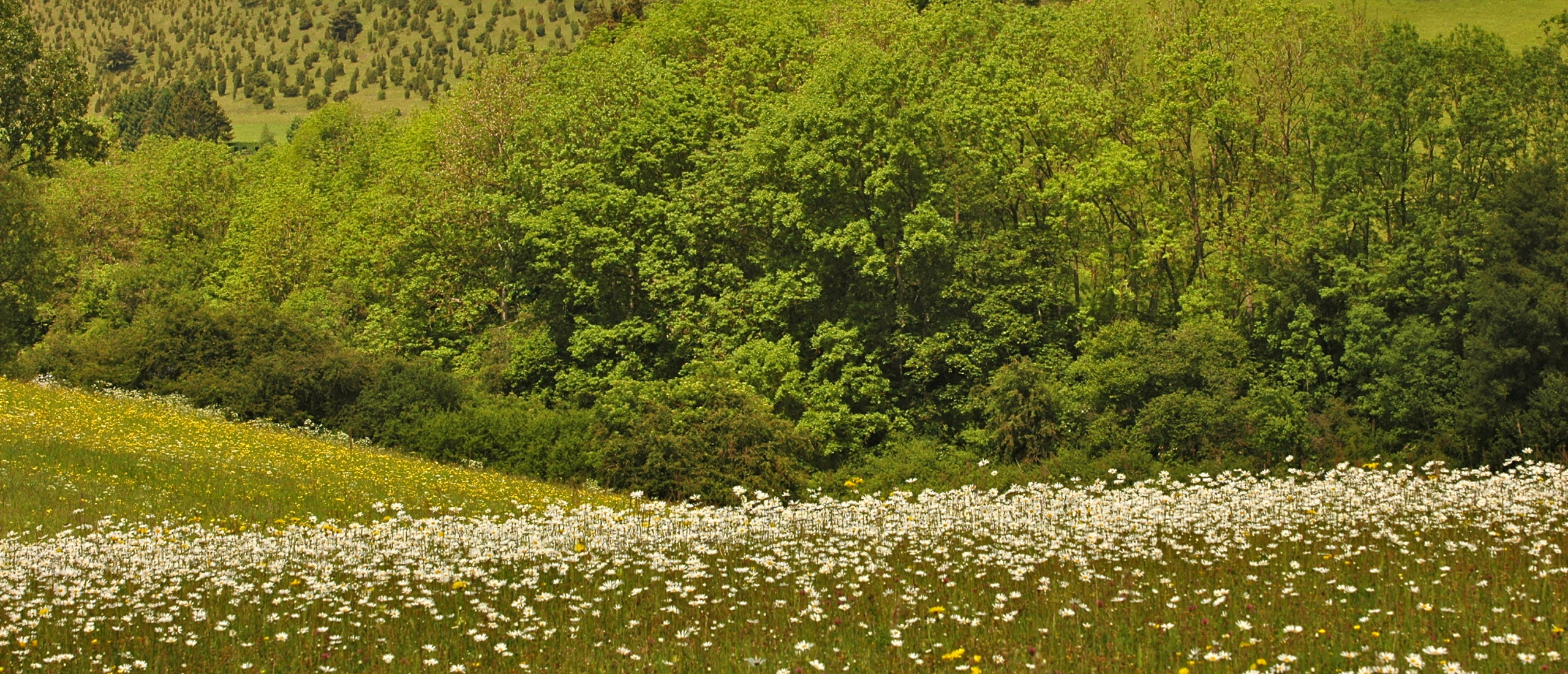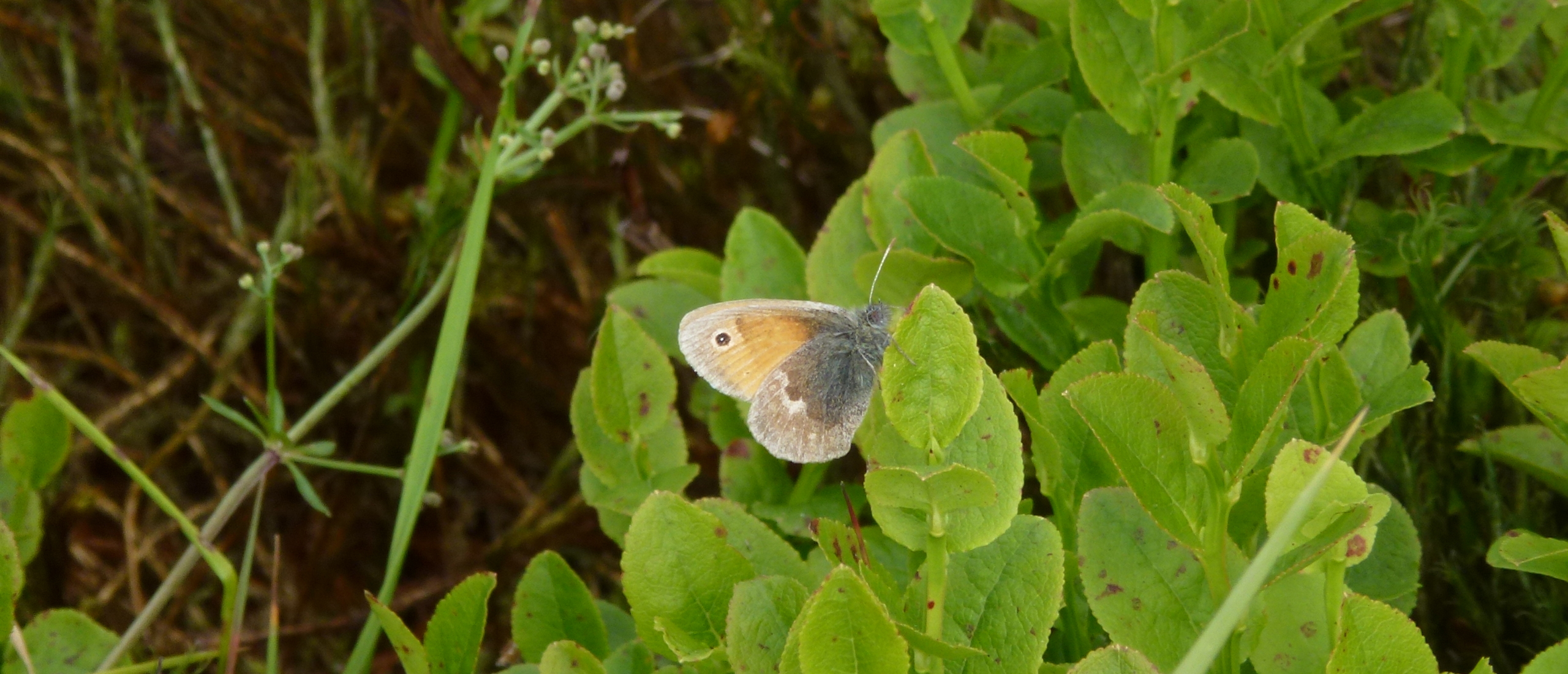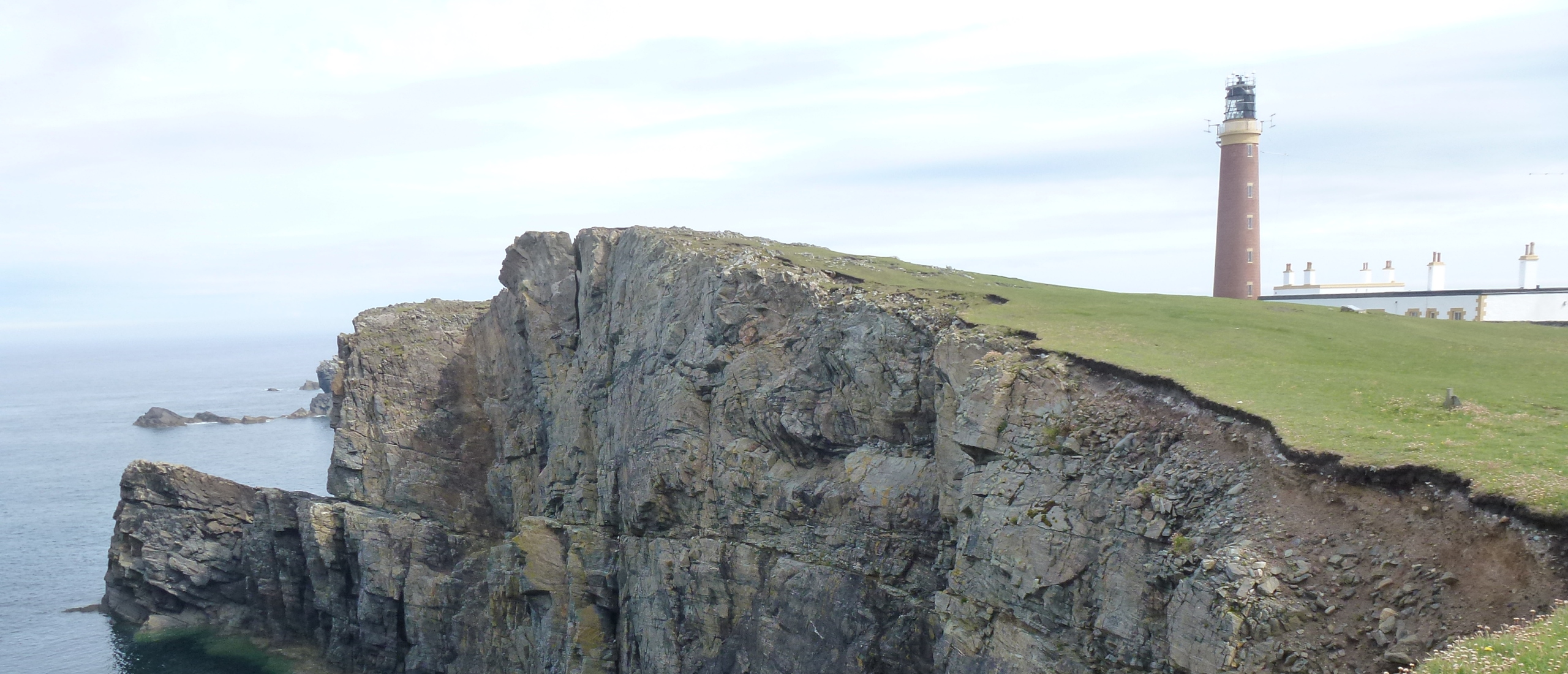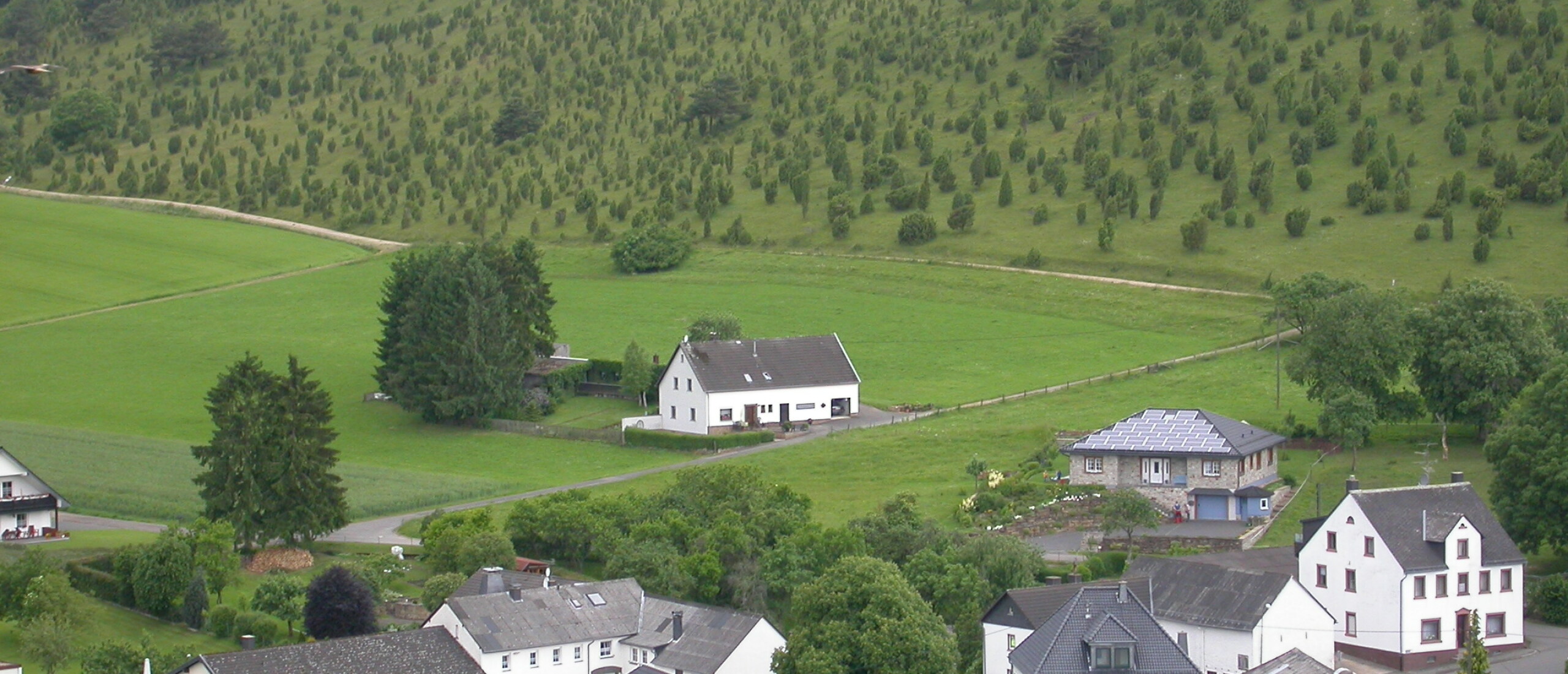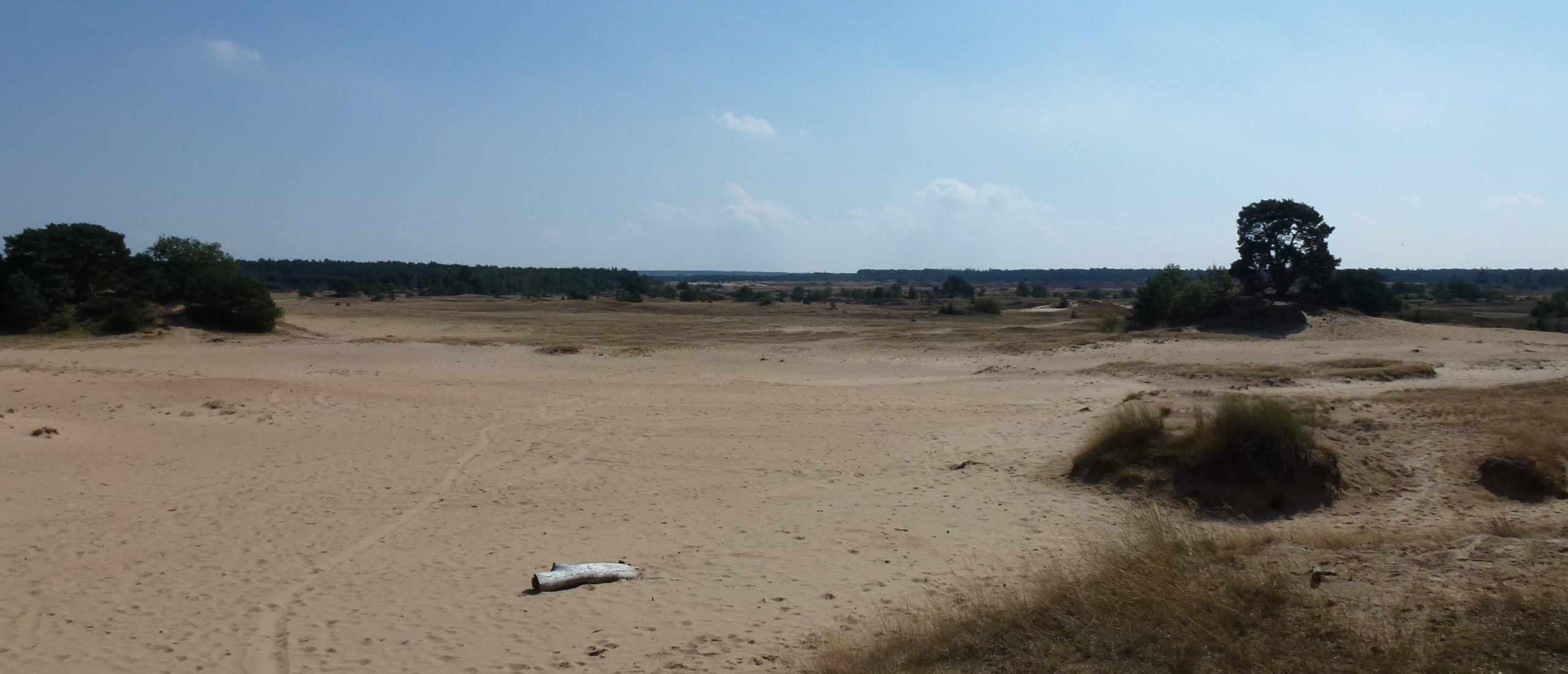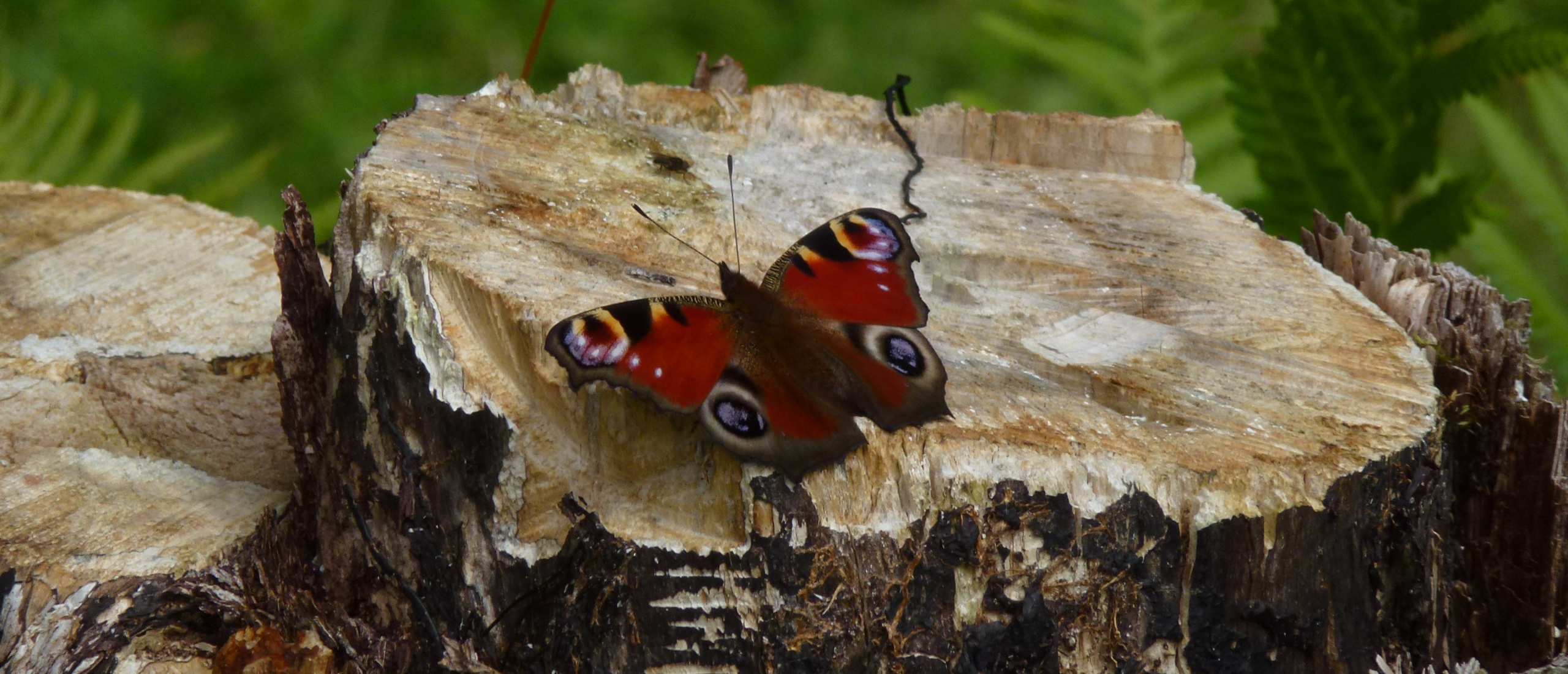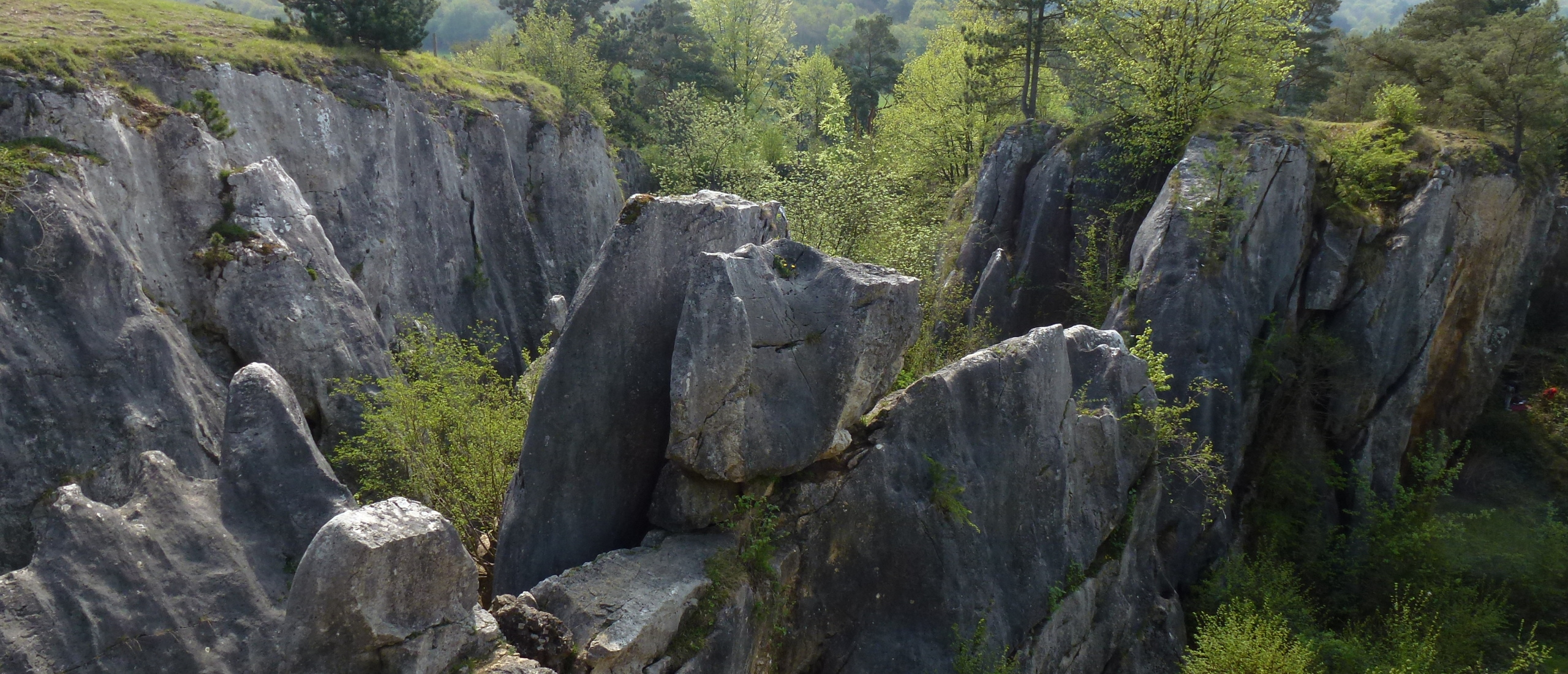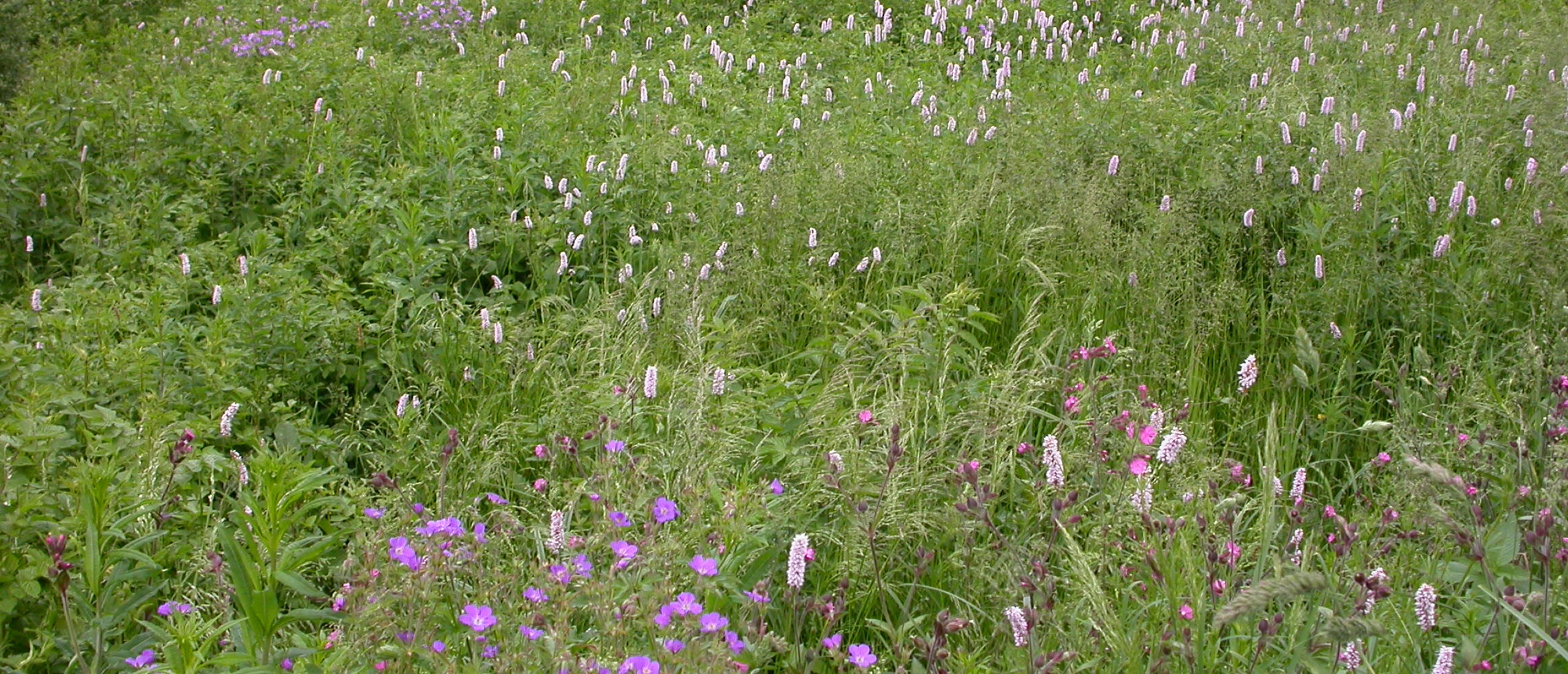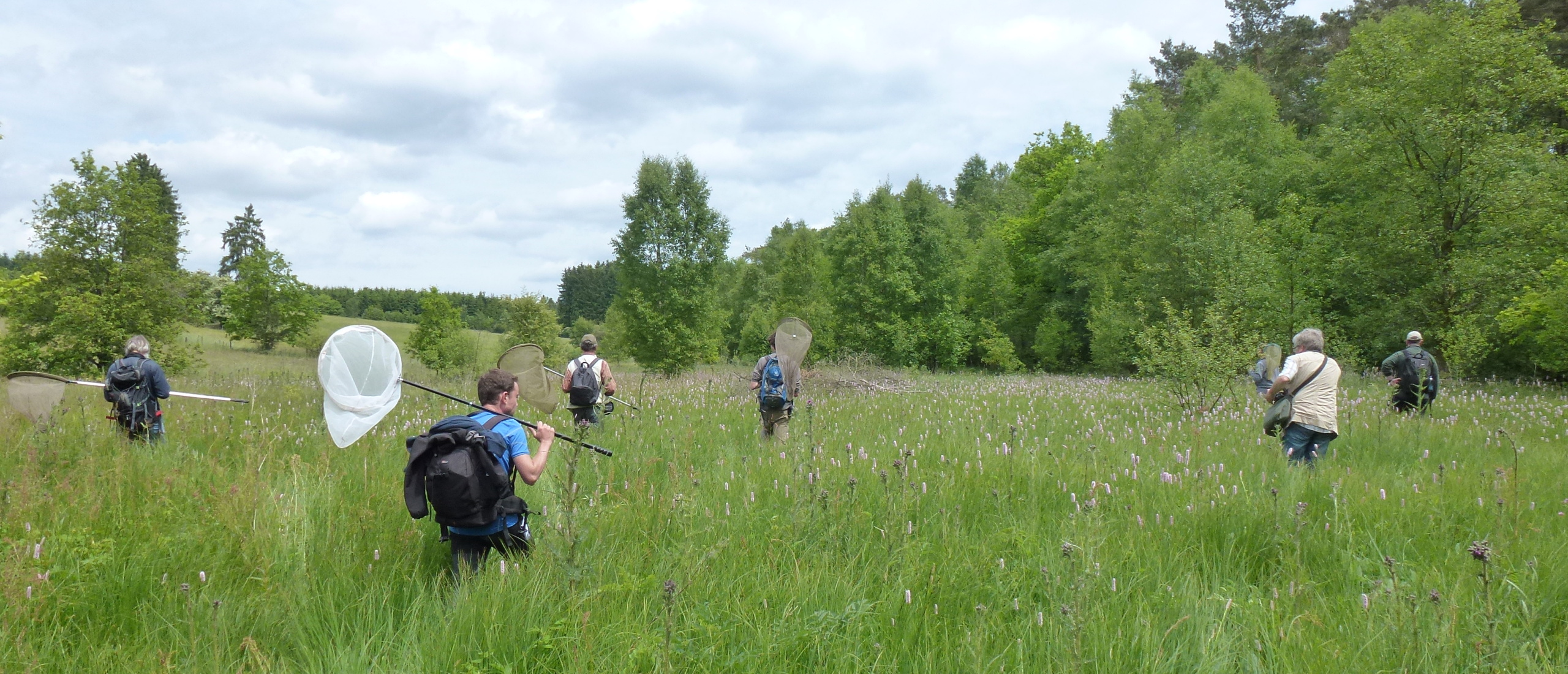
Weekend entomologique Franco-Belge - sans Belges!Please click on the images to view them larger This last weekend was billed as a Franco-Belgian weekend, an opportunity for the butterfly/dragonfly enthusiasts of the Nord-Pas de Calais region in France and of Wallonie in Belgium to get together and prospect some potential habitats on the French side of the border, as well as to build a cross-border relationship, which as insects do not respect national boundaries would seem useful from a conservation viewpoint. The French had booked accommodation for up to 32 participants - but in the event not one Belgian turned up. The Saturday was cool and with little real sunshine. I did manage a brief walk in my favourite northern French forest, where there were by now at least 20 Marsh Fritillaries, Euphydryas aurinia, and perhaps 10 Small Pearl-bordered Fritillaries, Clossiana selene (neither of these being new species for my annual list). One bonus was a single Large Skipper, Ochlodes venatus, which brought my total to 37 species. Despite the disappointing lack of Belgian participants, the Sunday excursion started in considerably warmer conditions, and the team set out to explore an area in the French Ardennes, adjacent to the Belgian border, and it was lot long before we spotted our first Chequered Skippers, Carterocephalus palaemon, perched on prominent vantage points, surveying their territories in the forest glades. This area also revealed a single Green Hairstreak, Callophrys rubi, and several rather old-looking Speckled Woods, Pararge aegeria.
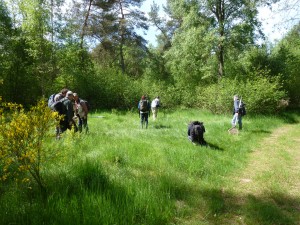 French butterfly-watchers prospecting the site - not a Belgian to be seen
French butterfly-watchers prospecting the site - not a Belgian to be seen
Having passed through a stretch of woodland, we reached our goal for the morning's prospecting: a protected area of raised peat bog, entirely surrounded by large trees, and harbouring a rich and highly vulnerable flora, it in turn hosting some relict populations of insects normally associated with more northerly areas, for example in Scandinavia or Boreal Russia. Our chief target in terms of butterflies was the Cranberry Fritillary, Boloria aquilonaris, which had been recorded here in earlier years, but for which no recent records exist. This fast-flying species is entirely restricted to extremely wet peat bogs in which its foodplant, the Cranberry, Vaccinium sp, grows in long strands across the hummocks of sphagnum moss.
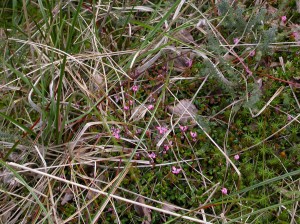 The tiny, elegant flowers of Cranberry growing on the Sphagnum moss
The tiny, elegant flowers of Cranberry growing on the Sphagnum moss
Despite numerous false alarms created by sightings of Small Pearl-bordered Fritillaries, no Cranberry Fritillaries were in evidence. This may have been simply due to the extremely late emergence of several butterfly species this year, caused by the exceptionally long cold spell we had right through the spring, or it may be that this tiny relict population has succumbed since the last recorded sightings. Our French guide was despondent about the encroachment of young trees across the site since his last visit, and was disparaging about the Office National des Forets, who own the reserve, and about the Conservatoire d'espaces naturels Champagne-Ardenne, who are supposedly responsible for its maintenance, and yet they still allow this unique and fragile ecosystem to become overgrown.
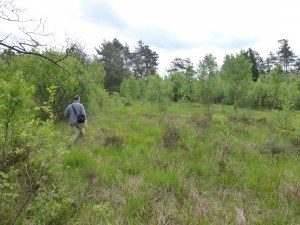 The wet, peaty areas so rich in specialised wildlife
The wet, peaty areas so rich in specialised wildlife
Although butterflies were in short supply (we did spot two late male Orange-tips, Anthocharis cardamines, and a couple of Brimstones, Gonepteryx rhamni), we were treated to an emergence of several Keeled Skimmer dragonflies, Orthetrum coerulescens, the males of which had not yet had time to develop their bluish-purple "adult" coloration.
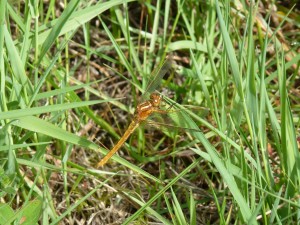 A relatively newly-emerged Keeled Skimmer, showing its characteristic wing posture
A relatively newly-emerged Keeled Skimmer, showing its characteristic wing posture
Shortly afterwards a single, female Northern Emerald, Somatochlora arctica, was caught and identified in the hand before being placed on a conveniently placed post for the photographers in the group. This dragonfly is also a relic of the last ice age, surviving this far south exclusively in these remote peat bogs that are so threatened.
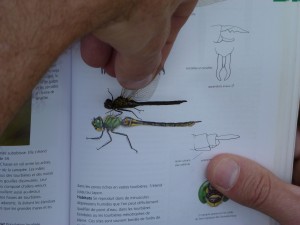 The Northern Emerald next to its picture in the book
The Northern Emerald next to its picture in the book
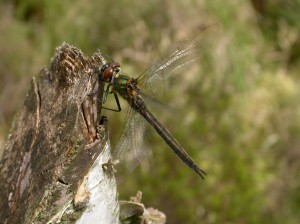 The Northern Emerald, recovering from its identification experience
The Northern Emerald, recovering from its identification experience
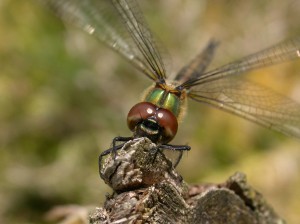 Face shot of the Northern Emerald. The two yellow patches are diagnostic
Face shot of the Northern Emerald. The two yellow patches are diagnostic
After lunch we made our way down a beautiful flowery meadow, which might in normal years have been expected to host numerous butterflies, but the only individual of interest was a male Sooty Copper, Lycaena tityrus, again underlining the extraordinarily late flying season we are currently experiencing. We then forded a small stream, crossing into Belgium as we went, and here we searched a wonderful area full of the pale purple, spiky flower-heads of Bistort, Polygonum bistorta. This plant plays host to two highly specialised butterflies, the Violet Copper, Lycaena helle, and the Bog Fritillary, Proclossiana eunomia. Although both occur widely in the Bistort zones further east in Belgium, it was nonetheless worth looking here at least for the Bog Fritillary, as there were rumours of its presence here, but we were unable to locate it on this occasion.
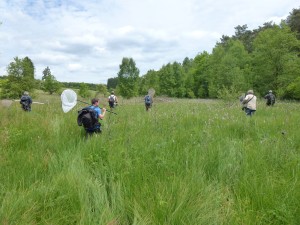 The group prospecting the Bistort field
The group prospecting the Bistort field
Our final destination was another peat bog, this time even more difficult to locate and enter, where again the Cranberry Fritillary was our chief target, but despite intensive searching, no butterflies other than a few Small Pearl-bordered Fritillaries and a single passing Large White, Pieris brassicae, which brought my list up to 39 species for the year. This area is also becoming degraded due to the encroachment of young birch trees, but again there appear to be neither the funds nor the will to take the necessary steps to secure the site's future, and our guides gloomily predicted that by the time they next visit, the open bog areas will have given way to young birch forest, losing in the process their unique flora and fauna. Being a butterfly enthusiast can be depressing at times. Not only does one only have a "window" of perhaps two or three weekends in which to see them, during which one has to be free to look AND the weather needs to be suitable, but the habitats of some species are so fragile and so fragmented that they can easily be lost forever if the sites are not managed in their favour. This is an expensive, labour-intensive task, and the vast majority of people would not see the value of it anyway.
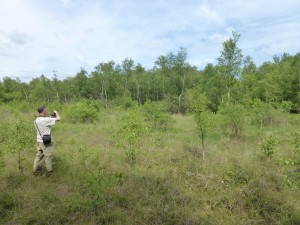 Birches encroaching onto the site
Birches encroaching onto the site
Luckily I was able to lift us out of any gloomy thoughts we may have had, by stooping to pass underneath an electrified barbed wire fence, and my trousers splitting dramatically from my waist to well down my thighs, revealing all to a highly amused audience!
My intention on the Monday was to scour the forest areas in the southern part of Belgium for the elusive Poplar Admiral, Limenitis populi, which I had once been treated to once, on my birthday in 2011, but the day dawned cloudy and overcast, followed by torrential downpours, rendering any sighting of this splendid butterfly out of the question (a video of this, one of Europe's largest butterflies, which I made on that day can be seen in the My Nature Films section on the right of this site). Conditions did improve in the late afternoon, allowing for observation of a steady stream of Red Admirals, Vanessa atalanta, as they powered northwards on their migration from Southern Europe and North Africa. My final butterfly adventure of the weekend took place in the spur of France known as the Botte de Givet, which projects northwards into Belgium along the Meuse. By now it was late afternoon, and while driving northwards on a fast road, I spotted some largish white butterflies with a characteristic sailing flight by the roadside. Luckily there was a convenient parking spot, so I stopped the car and walked back along the road verge, finding to my delight that they were indeed species number 40, the Black-veined White, Aporia crataegi, feeding avidly on the Red Clover flowers close the road. I was busily photographing these butterflies, which hold a certain mystique for British butterfly-watchers as the species became extinct in the U.K. in the 1920s, and indeed is still retreating in North-west Europe, when suddenly a car drew up behind me, and three gendarmes jumped out and proceeded to demand my papers, which luckily were all in order. They asked me what I was doing, to which I replied "Looking for butterflies", which they were clearly unconvinced by. Later it turned out that they were interested in why I should be brandishing a camera on a hillside overlooking a large nuclear power station - photographing Black-veined Whites sounded a highly suspicious cover for what I must really be doing: spying on France's nuclear installations!
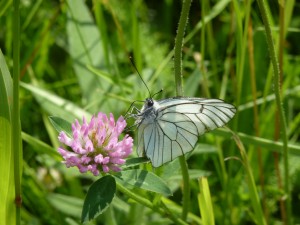 Black-veined White, photographed near a nuclear plant in France!
Black-veined White, photographed near a nuclear plant in France!
Butterfly list as of 17th June 2013: 40 species


